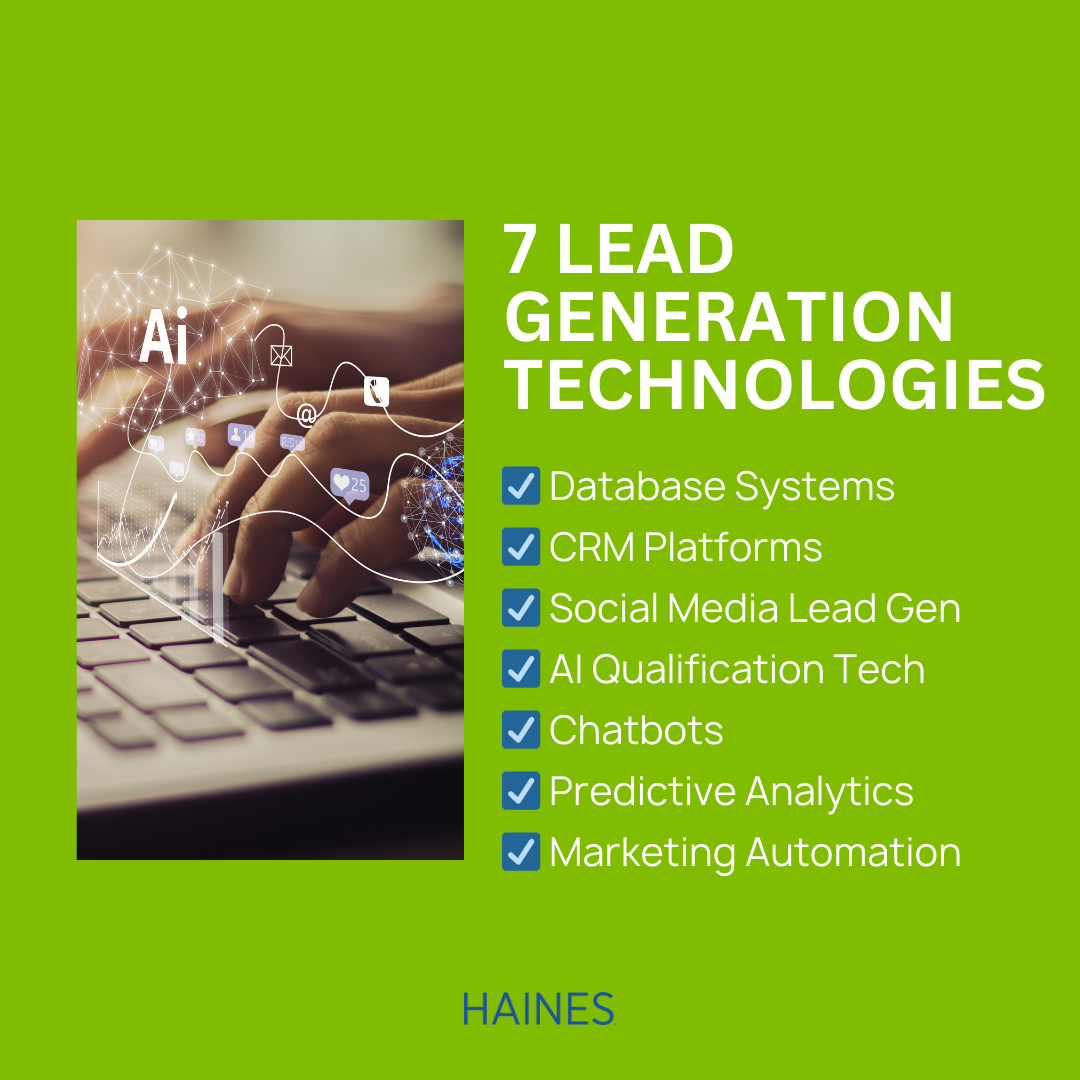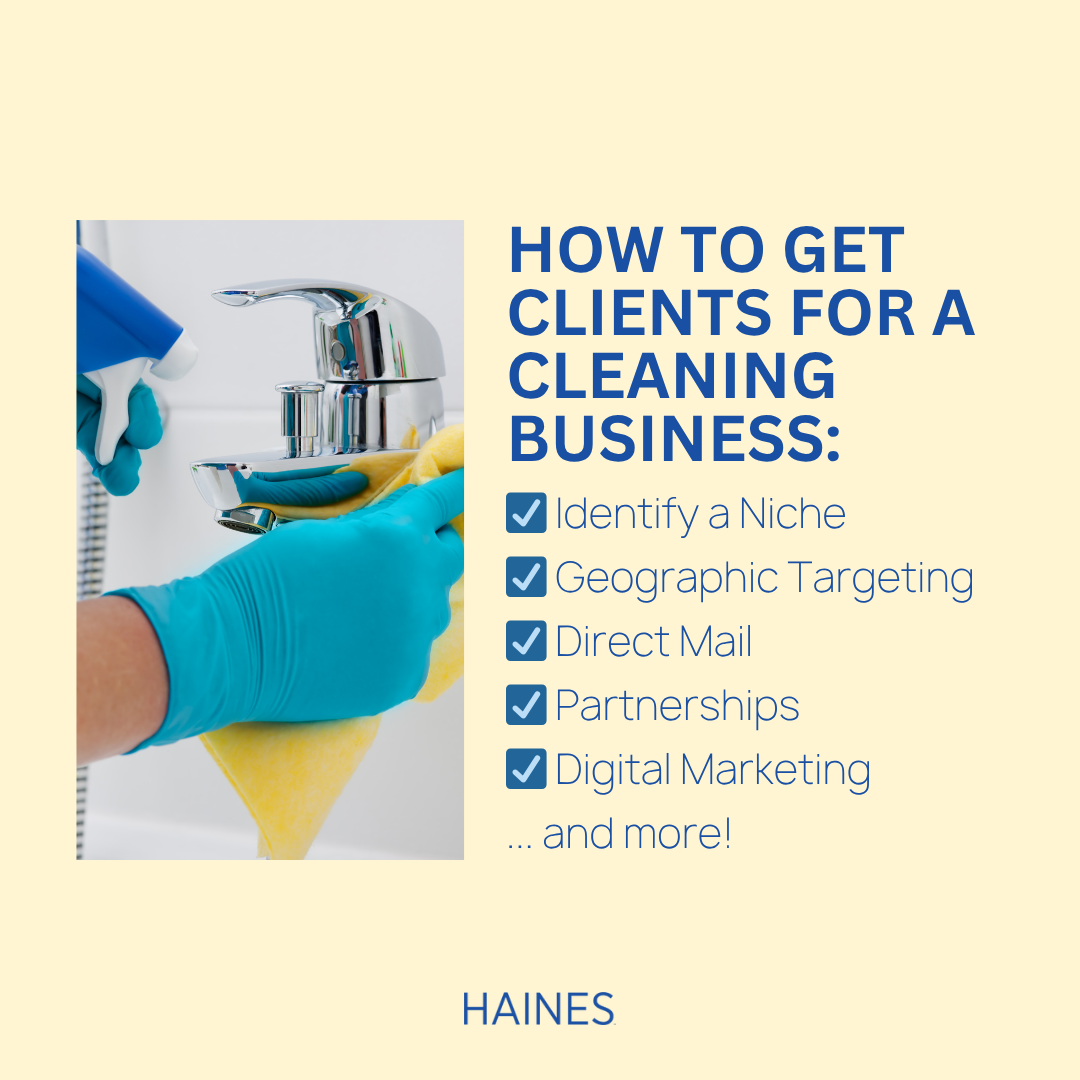Here are 10 simple ways to start using digital marketing today.
We’re sharing 10 simple ways that anyone can get started building a strong digital marketing presence.
Digital marketing is an umbrella term for any type of online marketing or advertising:
- Search Engine Optimization (SEO)
- Paid Search
- Display or Banner Advertising
- Remarketing or Retargeting
- Email Marketing
- Social Media Marketing
- Social Media Advertising
- Content or Inbound Marketing
You’ll notice “website” didn’t make the list. That’s because your website isn’t a form of marketing. Digital marketing activities that drive traffic to your website and generate leads is the actual digital marketing I’m going to discuss here.
Search Engine Optimization (SEO)
Search engine optimization is a digital marketing strategy to help your website be found in the search engines.
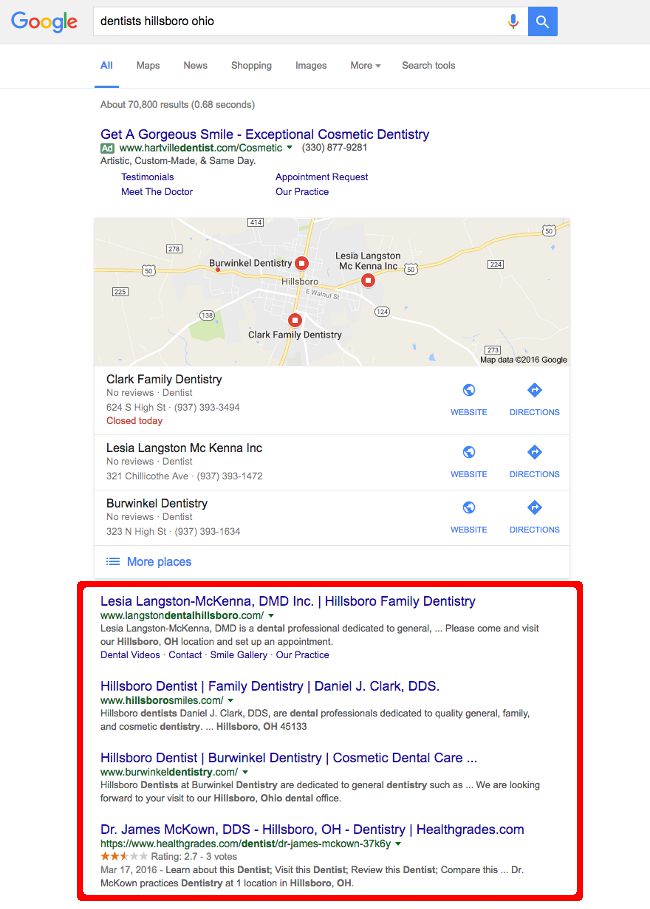
The “organic” section of Google’s search results page
SEO directly impacts how high you appear in the organic section of the search results page. The average web searcher does not click past the first two pages of search results. So the higher you appear, the more likely potential customers are to find your website.
These are called “organic” or “natural” listings because you can’t pay Google to appear here.
Businesses that appear on page one are either in a market or geography that has little competition, or they’re actively engaging in search engine optimization practices in-house or using an outside firm.
Search engine optimization doesn’t produce instant results. Rather, it’s a long-term strategy designed to produce lasting results over time.
Local SEO
In addition to the above, local businesses like attorneys, dentists and physicians, plumbers, roofers, and other home improvement contractors must focus on being found by local consumers.
The goal of local search or local SEO is to get your business to appear in both the local section of the search results (below) and on the top local directories and review sites.
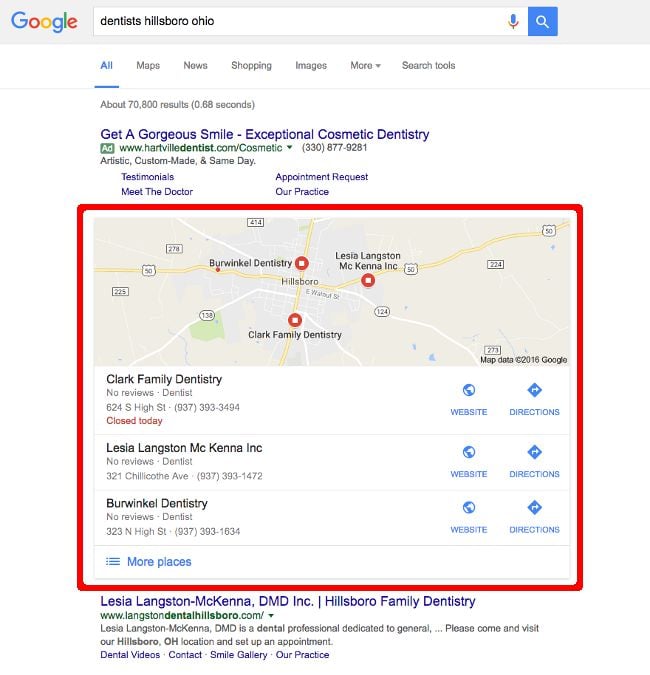
Google’s Local section of the search results page
{{cta(‘ba433449-3839-45a2-9da9-3e32ac3de022’)}}
Paid Search
Paid search (a.k.a., search engine marketing or SEM) places ads on the top, bottom, and right side of the search engine results page.
Whenever someone uses search words or phrases related to your product or service, your ad may appear.
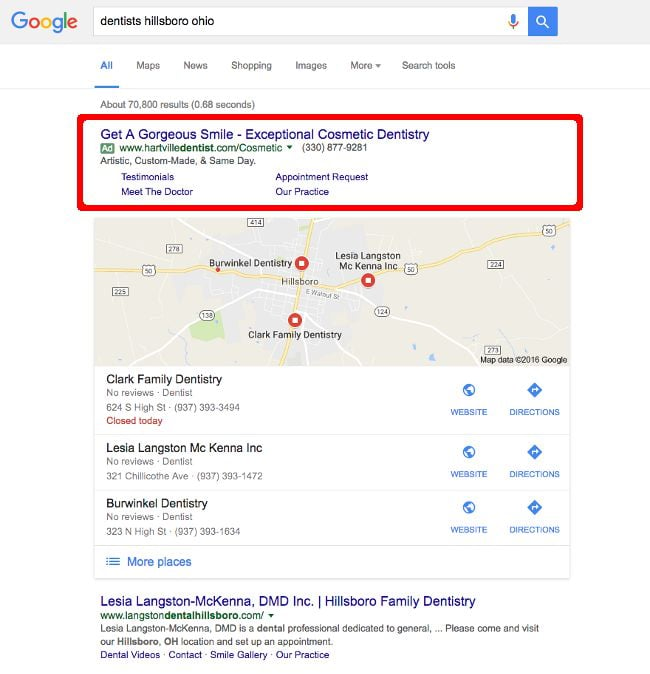
Google places paid ads at the top and bottom of its search results page
Paid search is commonly referred to as pay-per-click advertising (PPC) because you only pay when someone clicks on your ad.
Google AdWords is the best-known type of pay-per-click advertising. AdWords allows businesses to display ads on Google’s search results page and its network of partner sites.
Unlike SEO, pay-per-click advertising is a short-term strategy designed to produce instant results. But like any type of advertising, you must continue paying to keep your ad running.
Display or Banner Advertising
Display advertising allows you to advertise over a wide variety of websites by placing your banner ads on the top and sides of the main content.
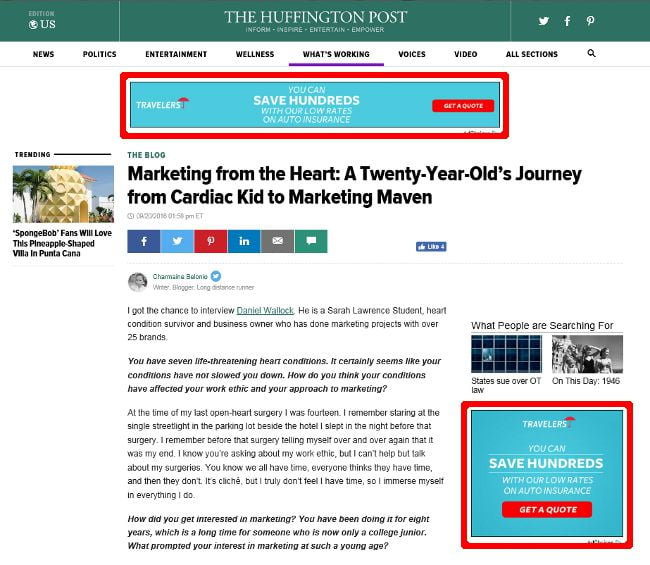
With display advertising, you can reach your target audience by geography (city/town, county, or zip code), demographic (age, income, gender, etc.), behavior (people who’ve recently searched for your product or service), or any combination thereof.
Click-through rates on banner ads are extremely low—0.17% (less than 2 clicks per 1000 impressions). So it’s best used for building brand awareness rather than generating leads.
That said, there’s a new type of display advertising that matches a computer IP address to a physical address, allowing you to send an online banner ad and a direct mail piece to the same household or business.

These IP-targeted campaigns have an average click-through rate 3.2 times higher than industry averages. Data from hundreds of thousands of IP-targeted campaigns show that combining IP targeting with direct mail increases response rates an average of 30 percent.
Remarketing or Retargeting
Retargeting is an advertising strategy designed to re-engage visitors who have left your website without taking action.
Ninety-eight percent (98%) of visitors leave a website without contacting the business or making a purchase. Retargeting increases return visits to your site by continuing to marketing to them throughout their buying process.
How it works:
- A consumer visits your website and views your offer
- Visitor leaves without taking action
- As he or she visits other websites within the ad network, your display ad appears on the top or along the side
- The consumer sees your ad, is reminded of his previous interest, and has the opportunity to return to your site
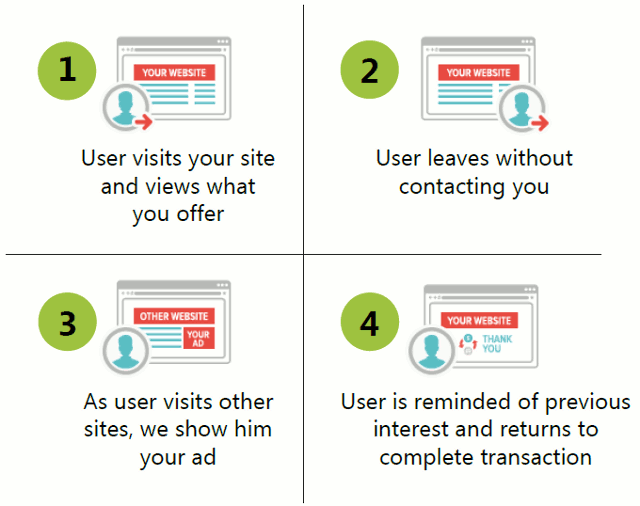
According to a study conducted by SeeWhy, 26% of customers who are exposed to retargeting will return to the website. Without retargeting, only 8% return.
Email Marketing
Not to be confused with SPAM, legitimate email marketing is based on getting permission from people who are interested in hearing from you. This could be existing customers or people who have inquired about your product or service by filling out a contact form on your website.
Think email marketing isn’t effective? According to the Direct Marketing Association, it yields an estimated 4,300 percent ROI.
- 44% of email recipients made at least one purchase last year based on a promotional email (Convinceandconvert.com)
- 55% of companies generate more than 10 percent of sales from email (Econsultancy/Adestra Email Marketing Census)
- 42% of businesses say email is one of their most effective lead generation channels (Circle Research)
Because it’s mostly free, email marketing is the most abused form of marketing. Those that misuse it end up on a SPAM blacklist, which can prevent legitimate emails to existing customers and vendors from getting delivered.
{{cta(‘0b6d2263-1cb5-41f7-a1dd-04a38dffcd75’)}}
Social Media Marketing (SMM)
Social media marketing is the process of using social media to generate website traffic and leads by draw attention to your business.
The goal of social media marketing is to post content that users will share with their social network to help your company increase brand exposure and broaden its customer reach.
Top Social Media Sites
- Facebook (1.7B users)
- YouTube (1B users)
- Tumblr (555M users)
- Google+ (540M users)
- Instagram (500M users)
- Twitter (313M users)
- Snapchat (200M users)
- LinkedIn (106M users)
- Pinterest (100M users)
Although social media has been touted as a “free” way to market, small businesses often struggle with choosing the best social media channels, finding time to post consistently, generating leads, and growing their follower base.
{{cta(‘16976b31-9d43-4439-a232-608c0e062f4f’)}}
The Decline of Organic Reach
Many social sites—Facebook in particular—have decreased the organic reach of your posts (Organic reach refers to how many people you can reach for free by posting to your Page.)
Between 2012 and 2014, Facebook’s organic reach dropped from 16% to 6.5%. This means over 90% of your Facebook fans don’t see your posts.
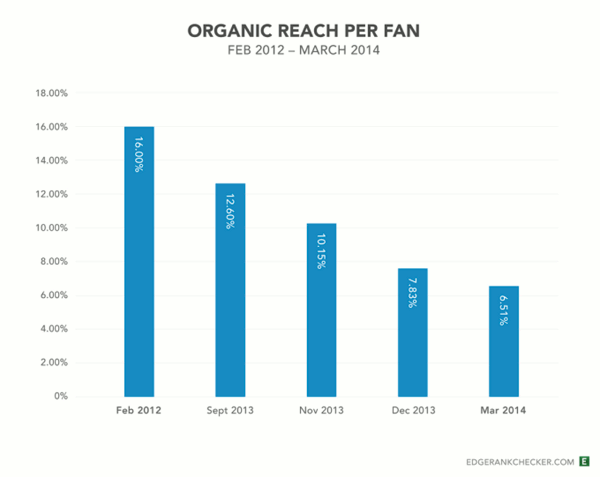
What’s more, organic reach is expected to approach zero in the foreseeable future.
Depending on whom you ask, there are two possible explanations for this:
- There’s simply too much content and Facebook wants to provide the best user experience by not cluttering the News Feed with too many business posts.
- It’s Facebook’s way to get people to spend money on ads.
The reality is social media companies need to make money and become profitable just like any other business. As a result, social media has evolved into a paid marketing channel. (You didn’t expect to get all that exposure for free, did you?)
That’s not to say it’s impossible to get a higher than average organic reach. It’s just a lot more difficult.
Social Media Advertising
It’s not all bad. A 2014 study by Neustar, found social media advertising to be the most effective form of online paid advertising for increasing impressions, clicks and conversions at a low cost.
You can reach people who haven’t followed or liked your Page by targeting by location, demographics, interests, or behaviors.
But the nature of Facebook offers some unique targeting options not available in other forms of advertising:
- Connections targets people and their friends who already like your Page.
- Custom Audiences targets existing customers or website visitors, using a customer contact list, your website traffic, or activity in your app.
- Lookalike Audiences targets people similar to your best customers.
You also have a variety of ad types to choose from, such as:
- Special Offers to entice more people to do business with you
- Events to invite people an open house or seminar
- Local Awareness to reach people surrounding your business
- Lead Capture Ads that allow people to sign up for your offer in exchange for their contact information
Carousel Ads
Facebook’s newest ad format is the Carousel Ad which allows you to showcase multiple products within a single ad.
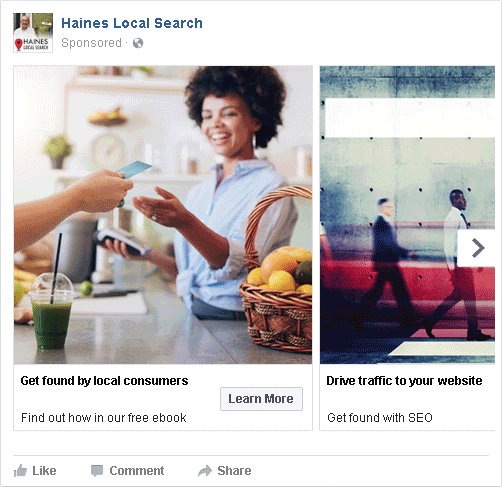
Accord to case studies, carousel ads are driving more traffic and getting higher click-through rates than static sponsored posts.
{{cta(‘050a75bb-5518-4c64-923f-ff68e1a11e4b’)}}
Unlike paid search, Facebook targets people by their interests rather than their search phrases. In other words, you’re targeting people based on who they are rather than what they’re looking for.
This lets you reach people early in the buying process, before they are fully aware of their need or don’t realize they need what you have to offer.
Content Marketing or Inbound Marketing
Content marketing attracts potential customers to your website by providing articles, videos, and ebooks that address a problem or question they have.
Content marketing and inbound marketing are often used interchangeably, but there’s an important difference. For a long time, all we did was content marketing. I wrote hundreds of articles that I’m sure many people read and enjoyed—and then left.
Inbound marketing takes this a step further, by offering more in-depth information on the same topic that brought the visitor to your website—like an ebook that requires they fill out a contact form to obtain.
This turns a visitor into a potential lead. Now you can interact with them each step of the buying process, by offering valuable content to help them along the path to making a decision.
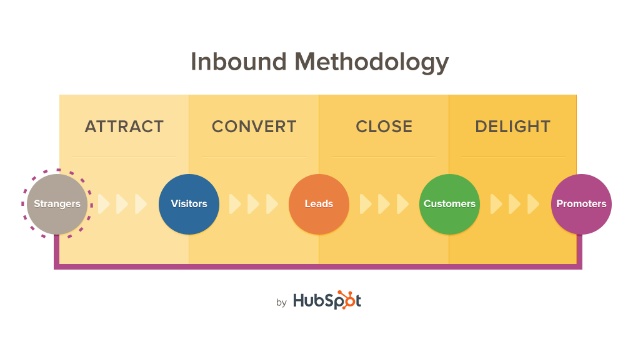 So to sum it up, content marketing is a subset of the entire inbound marketing methodology, which turns visitors into leads, then nurtures those leads into customers.
So to sum it up, content marketing is a subset of the entire inbound marketing methodology, which turns visitors into leads, then nurtures those leads into customers.
The Final Word on Digital Marketing
If you want to learn how Haines can fit into your digital marketing plan, request a demo below to learn why we’re trusted by over 1000+ customers.
{{cta(‘1205086f-06e1-443a-924f-3d3a05ef43ee’,’justifycenter’)}}
About the Author

Ashley Williams
Since 1932, Haines has been publishing the original Criss Cross directory. Now, instead of a giant book, we deliver the same great information in a digital format. We are a family-owned, certified women-owned business led by me as our first female, fourth-generation CEO. Our Criss+Cross Directory is nationally recognized for delivering essential residential and property data. We serve diverse clients — from government agencies to real estate professionals, mortgage companies, investors, contractors, and more
Want to Get More Tips from Haines? Subscribe to Our Blog
Recent Posts
Testimonials





